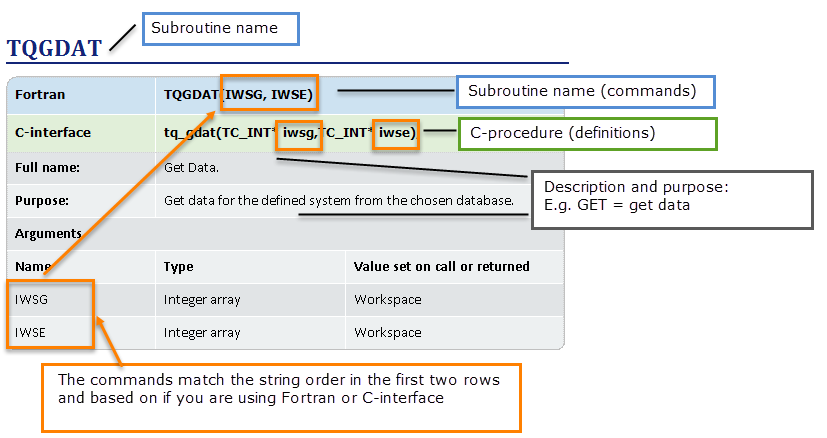TQGPCN
| Fortran |
TQGPCN(INDEXP, INDEXC, NAME, IWSG, IWSE) |
|
|---|---|---|
| C-interface |
tq_gpcn(TC_INT indexp,TC_INT indexc,TC_STRING name,TC_STRING_LENGTH strlen_name,TC_INT* iwsg,TC_INT* iwse); |
|
|
Full name: |
Get Phase Constituent Name. |
|
|
Purpose: |
With this subroutine the application program can get the name of an indexed constituent. |
|
|
Comments: |
If the same species appear in more than one sublattice site of a phase, they are named as A#2, A#3, etc., which means A on the second sublattice and A on the third sublattice, etc. The opposite conversion is done by TQGPCI. |
|
|
Arguments |
||
|
Name |
Type |
Value set on call or returned |
|
INDEXP |
Integer |
Set to a phase index. |
|
INDEXC |
Integer |
Set to the constituent index. |
|
NAME |
Character*24 |
Return the constituent name. |
|
IWSG |
Integer array |
Workspace |
|
IWSE |
Integer array |
Workspace |
Note the following conventions to distinguish between the programming languages.
- Routines starting with TQXXX, for example, TQGDAT, are in the Fortran interface
- Routines starting with tq_xxxx, for example tq_gdat, are in the C-interface.
- In Fortran, all routines are subroutines and do not return any values except where explicitly declared as functions.
- All the C procedures are declared as void and do not return any values except where explicitly otherwise declared.
An example of how to read the subroutine definitions.
